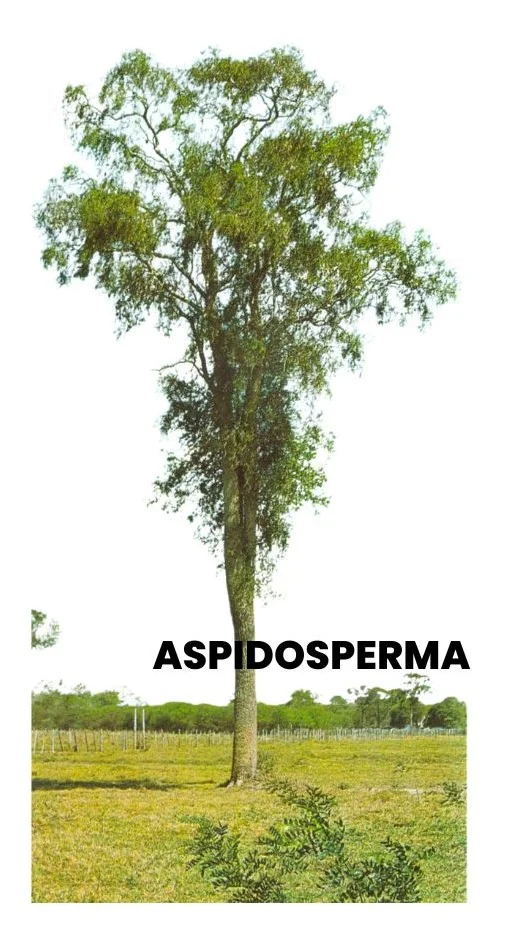Aspidosperma, commonly known as Quebracho, is recognized as the “digitalis of the lungs.” It is a homeopathic remedy derived from the bark of the Aspidosperma tree.
Quebracho is primarily associated with addressing temporary obstructions to blood oxidation by stimulating respiratory centers, thereby enhancing the process of oxidation and the elimination of carbonic acid.
This remedy is notably indicated for conditions related to pulmonary stenosis, thrombosis of the pulmonary artery, uraemic dyspnea, and various forms of asthma.

SOURCE INFORMATION
- Aspidosperma, commonly known as Quebracho, is a genus of trees indigenous to South America.
- It is primarily found in regions of Argentina, Brazil, Paraguay, and surrounding areas.
- The name “Quebracho” is of Spanish origin, derived from “quiebra hacha,” which translates to “axe-breaker.”
- This name reflects the hardness of the wood, making it challenging to cut.
Historical Facts
Traditional Uses: Indigenous people of South America have a history of utilizing various parts of the Quebracho tree for traditional purposes.
The wood was notably employed for making tools and weapons due to its durability.
Tanning Industry: In the late 19th and early 20th centuries, Quebracho wood gained prominence in the tanning industry.
The high tannin content in the bark made it valuable for tanning leather.
The tannins extracted from Quebracho were used to process hides, contributing to the leather industry.
Hardwood: Apart from its medicinal and industrial uses, the wood of the Quebracho tree is recognized for its hardness and density.
It has been used in construction and for manufacturing furniture.
Homeopathic Remedy: In the field of homeopathy, the bark of the Quebracho tree is utilized to prepare a remedy known as Aspidosperma.
It has been employed for respiratory conditions, particularly asthma and breathing difficulties.
DRUG PATHOGENESIS
Quebracho acts as a stimulant to the respiratory centers, promoting increased oxygenation in the blood.
By facilitating the exchange of gases in the lungs, it aids in the removal of carbonic acid, leading to improved respiratory function.
It is particularly beneficial in cases of asthma, addressing the “want of breath” during exertion.
KEY CHARACTERISTICS
- Digitalis of the Lungs: Quebracho is likened to digitalis due to its impact on lung function, emphasizing its role in respiratory conditions.
- Stimulation of Respiratory Centers: It effectively stimulates respiratory centers, contributing to enhanced oxygenation.
- Pulmonary Stenosis and Thrombosis: Indicated in cases of pulmonary stenosis and thrombosis of the pulmonary artery.
- Asthma: Valuable in various forms of asthma, especially where breathlessness is a prominent symptom during exertion.
PARTICULAR DISEASE SYMPTOMS
- Asthma: Quebracho is highly effective in managing different forms of asthma, providing relief from breathlessness, particularly during physical exertion.
- Cardiac Asthma: Useful in cases of cardiac asthma where respiratory distress is associated with heart conditions.
REMEDY RELATIONSHIP
DOSE
- First trituration or tincture.
- Aspidospermin hydrochloride: 1 grain of 1x trituration.
- Frequency: Every hour for a few doses.
Frequently Asked Questions
What is Quebracho’s role in pulmonary conditions?
- Quebracho is known for its ability to stimulate respiratory centers, increase blood oxygen levels, and alleviate conditions such as asthma and pulmonary stenosis.
How does Quebracho compare to other remedies?
- Quebracho shares similarities with Coca, Arsenic, and Coffea in addressing respiratory issues. Catalpa is another remedy for difficult respiration.
What is the significance of “want of breath” as a guiding symptom?
- “Want of breath” during exertion is a key indication for Quebracho, guiding its use in conditions where breathlessness is prominent.
Can Quebracho be used in cardiac asthma?
- Yes, Quebracho is considered effective in cases of cardiac asthma, where respiratory distress is linked to heart conditions.
Meaning of Difficult Words
- Uraemic Dyspnea: Breathlessness associated with uremia, a condition where waste products accumulate in the blood due to kidney dysfunction.
- Trituration: The process of grinding or rubbing a substance to form a fine powder for medicinal use.
